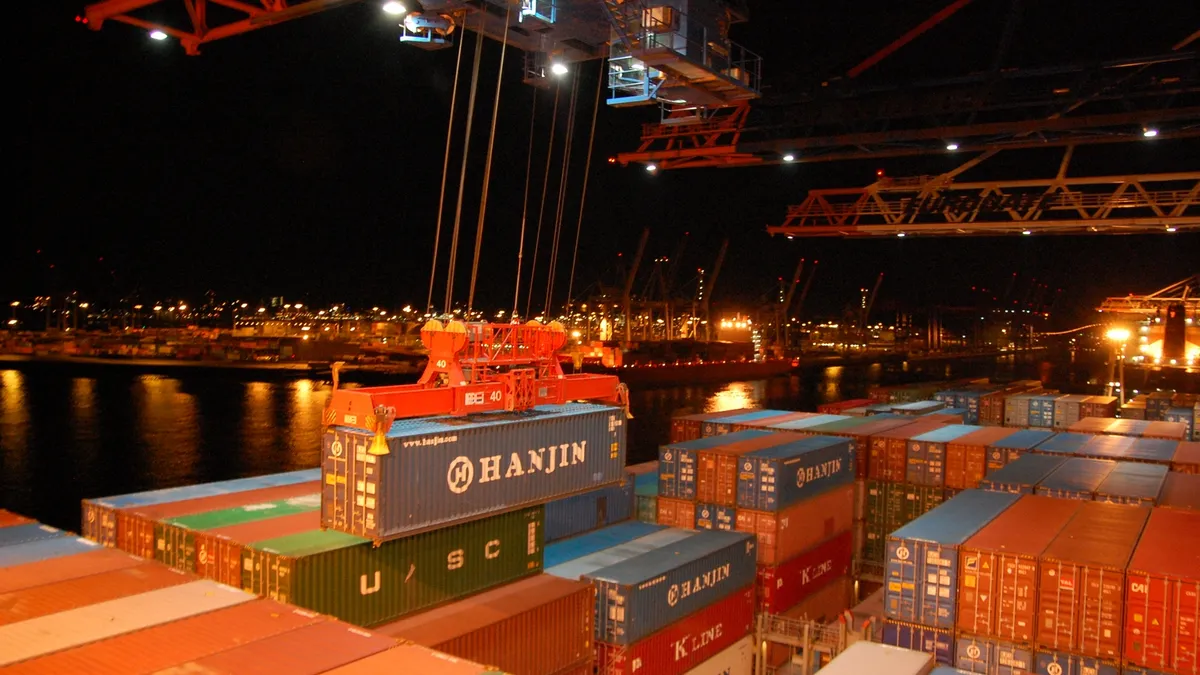Dive Brief:
- The Consumer Technology Association (CTA) puts the total technology imports affected by the tranche four tariffs proposed Tuesday at "more than half" of the $300 billion total.
- "This immense round of tariffs is exponentially worse for our country," CTA CEO Gary Shapiro said in a statement. "China is one of the top export markets for American technology — and its retaliatory tariffs will choke U.S. job creation and global sales for American manufacturers and innovators."
- In 2018, the United States imported $71.8 billion "cell phones and other household goods," $11.7 billion in television and video equipment and $15.9 billion in items listed as "electric apparatus," from China according to the Census Bureau. If not all, then large segments of these imports would be impacted by a new, fourth list of proposed tariffs that includes a wide range of electronics from cell phones to televisions to headphones and speakers.
Dive Insight:
As of 2017, 37% of all mechanical and electrical imports into the U.S. came from China. This made China the United States' largest import partner in this segment, according to the World Bank.
But technology supply chains do exist in other countries. Malaysia, for example, began exporting semiconductors in the 1970s and other Southeast Asian countries have also had electronic supply chains for decades, said Linda Lim, a professor of corporate strategy and international business at the University of Michigan.
Moving operations into another country that isn't affected by tariffs is a process that could take years. And some of the locations companies would likely look to — India, Thailand or other Southeast Asian countries — have their own issues including poor infrastructure and a lack of experience, Lim told Supply Chain Dive.
Moving to a new country involves a number of costs including the shutdown cost at the old location, but also the cost to start the new location including processes like training new employees.
One place retailers and technology firms likely won't look to: the United States. President Donald Trump has suggested companies simply buy from American suppliers to avoid these tariff costs. But Lim says business is more likely to move to a country where labor is cheaper, not one where it is more expensive like the U.S.
This is a sentiment echoed by Rich Wrightington, the executive director of sourcing at GE Appliances, who said last month GE had begun looking at location moves, but the company had not found any opportunities to move manufacturing back to the U.S.
Before moving to another location, though, a company will likely have to either pass the cost of the tariffs along to their customer or absorb it and accept lower margins, Lim said.
"The electronic manufacturing services companies that do final assembly of electronics such as smart phones and laptops in China operates with razor thin margins and will not be able to absorb tariff increases, so they’ll have to pass them on to the original equipment manufacturers (OEMs)," Johan Gott, a principal at A.T. Kearney, told Supply Chain Dive in an email.
Many of these companies will then pass the cost along to the final consumer, Gott said.
J.P. Morgan did an analysis of the potential impact of tariffs on all imports from China on the iPhone and found Apple would need to increase the sales price by as much as 14% "to offset headwinds from scope expansion of tariffs." If Apple does not increase its prices then there would be a 400 basis point hit to its margin, according to the research note emailed to Supply Chain Dive.
And while cellphones are directly targeted in the most recent tariff list, other Apple products could also be affected, the note concludes.
"Although investors are most focused on the impact to iPhone gross margins as a result of the tariffs, it is worth highlighting that the impact on other hardware products sold by Apple should be kept in mind as well, including Mac devices, iPads and wearables and accessories, which account for roughly half or around $70 bn of revenues relative to $144 bn of revenues from iPhones," it reads.
How companies decide to react will depend on whether they consider this a short-term challenge. "If people think that this is going to be a long-term thing then there will be a movement" of suppliers into other countries, Lim said.
Shefali Kapadia contributed to this report.
This story was first published in our weekly newsletter, Supply Chain Dive: Procurement. Sign up here.














